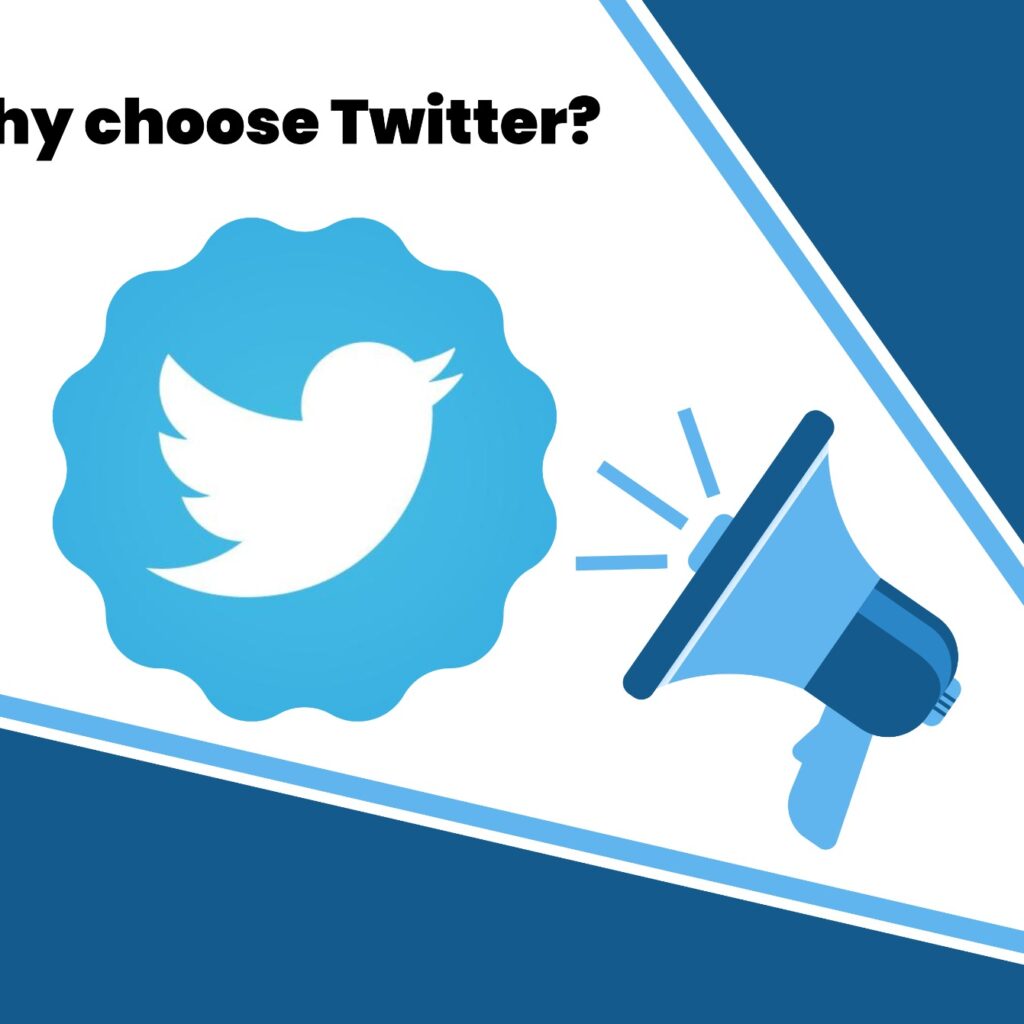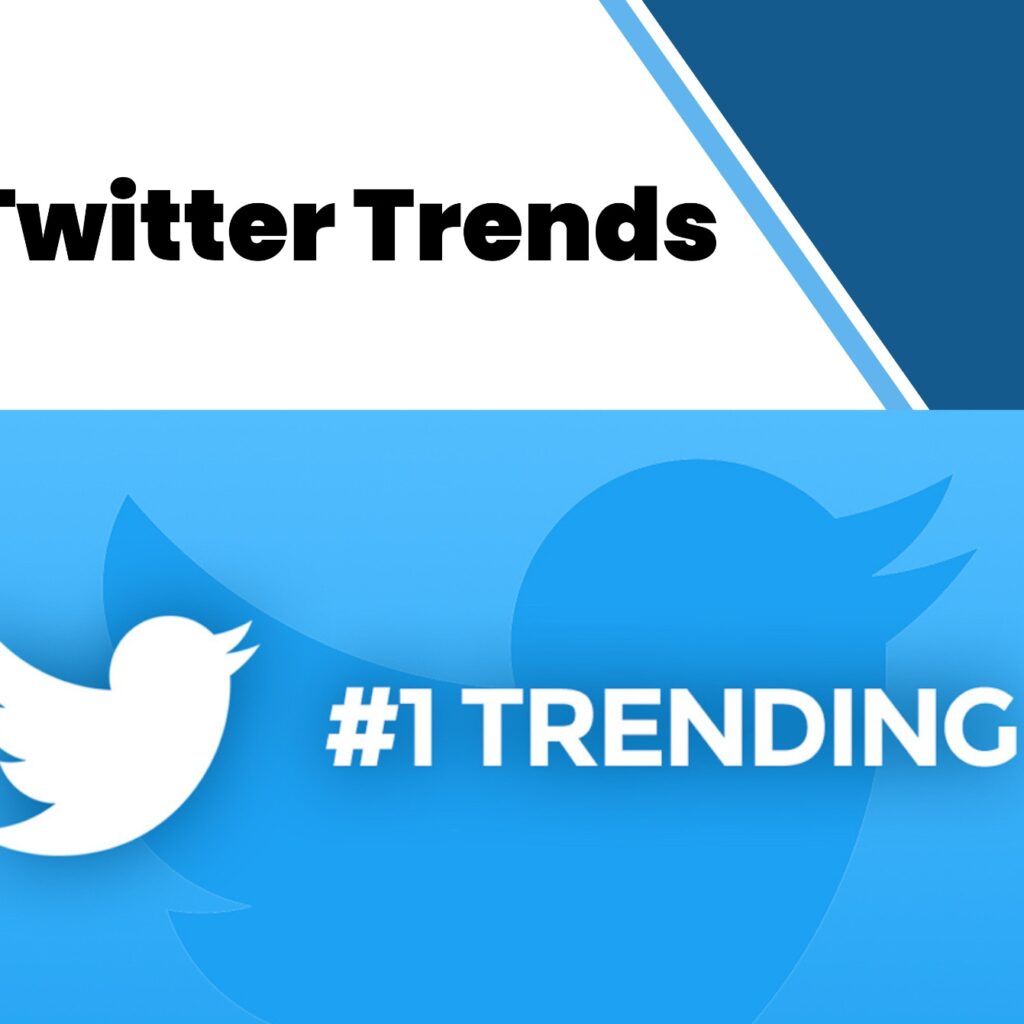Twitter influencer marketing refers to partnering with popular Twitter users (influencers) to promote a product, service, or brand on the platform.

The idea is that influencers have a large following and a level of trust with their audience, which can help a brand reach and engage new customers. The influencer might tweet about the brand, include it in a Twitter thread, or participate in a sponsored Twitter chat, among other tactics.
Why choose Twitter?
- Large audience
- Relevant audience
- Authenticity
- Viral potential
- Measurable results

How to create a Twitter marketing strategy
Here are steps to create a Twitter marketing strategy:
Define your goals
Determine what you want to achieve with your Twitter marketing efforts, such as increasing brand awareness, driving website traffic, or boosting sales.
Know your target audience
Research and understand your target audience on Twitter, including their interests, behaviors, and online habits.
Develop a content strategy
Decide the type of content you want to share on Twitter, such as promotions, industry news, or behind-the-scenes glimpses of your brand.
Build a Twitter presence
Optimize your Twitter profile and establish a consistent brand voice and visual aesthetic.
Engage with your audience
Respond to tweets, retweet and reply to others, and participate in Twitter chats to build relationships and engage with your followers.
Measure and adjust
Use Twitter analytics tools to track your progress and adjust your strategy based on what works and doesn’t.
Collaborate with influencers
Reach out to relevant influencers and establish partnerships to help promote your brand on Twitter.
Audit your accounts
Auditing your Twitter accounts is important in creating a Twitter marketing strategy. Here are some steps to follow in auditing your accounts:
Review your Twitter profile
Ensure that your profile is complete, up-to-date, and accurately represents your brand.
Evaluate your following
Take a closer look at who you’re following and who’s following you. Unfollow any inactive or irrelevant accounts, and consider following industry leaders and influencers in your niche.
Assess your content
Review your past tweets to see what has performed well and has yet to. Use this information to inform your content strategy moving forward.
Set goals
Setting clear and measurable goals is critical in creating a successful Twitter marketing strategy. Here’s how to set goals for your Twitter marketing efforts:
Determine your objectives
What do you want to achieve with your Twitter marketing efforts? Possible goals include increasing brand awareness, driving website traffic, boosting sales, or improving customer engagement.
Make goals specific and measurable
To ensure they are attainable, make them specific and measurable. “increase brand awareness,” set a goal to “grow Twitter followers by 20% in the next quarter.”

Set realistic and achievable targets
Consider the resources and time you have available and your target audience when setting goals. Make sure your goals are achievable, given the circumstances.
Prioritize your goals
Decide which goals are most important to your business and prioritize them.
Monitor progress: Regularly track your progress against your goals and adjust your strategy as needed.
Check out the competition.
Checking out the competition is important in creating a successful Twitter marketing strategy. Here are some steps to follow:
Identify your competitors
Determine who your main competitors are on Twitter and list their accounts.
Study their profiles
Review your competitors’ Twitter profiles, paying close attention to their content, tone, and branding. Take note of what they’re doing well and what opportunities for improvement.
Analyze their engagement
Look at the level of engagement their tweets receive, including likes, retweets, comments, and shares.
Monitor their activity
Keep an eye on your competitors’ Twitter activity, including what they’re tweeting about and how often they post.
Create guidelines
Creating guidelines for your Twitter marketing efforts is important in establishing a consistent and effective strategy. Here are some guidelines you may want to consider:
- Brand Voice and Tone
- Posting Frequency
- Engagement Guidelines
- Influencer Marketing
- Analytics and Reporting
Make a content calendar.
A content calendar is essential for managing and organizing your Twitter marketing efforts. Here are the steps to create a Twitter content calendar:
- Define your content goals
- Determine your target audience
- Plan your content types
- Schedule your posts
Analyze your analytics
Analyzing your Twitter analytics is an important step in determining the effectiveness of your marketing efforts and making informed decisions about future strategies. Here’s how to analyze your Twitter analytics:
- Set up tracking
- Identify key metrics
- Review your performance
- Identify trends
Features
Twitter offers a range of features that can be leveraged for marketing purposes, including:

Twitter Feed
Your Twitter feed is the mainstream of tweets you see when you log in to Twitter. This is where you can post and view tweets from other users.
Twitter Moments
Twitter Moments allow you to curate tweets and media around specific events or topics. You can use Twitter Moments to showcase your brand and engage with your audience.
Twitter Cards
Twitter Cards allow you to add rich media to your tweets, such as images, videos, and product information. They can be a powerful tool for promoting your brand and driving engagement on Twitter.
Twitter Ads
Twitter Ads allow you to promote your tweets and target specific audience segments, such as location, interest, and behavior. You can use Twitter Ads to drive engagement and reach new followers.
Twitter Lists
Twitter Lists allow you to organize and categorize the users you follow on Twitter. You can use Twitter Lists to segment your audience and tailor your engagement strategies.
Twitter Analytics
Twitter Analytics provides insights into your tweets’ performance and overall Twitter presence. You can use Twitter Analytics to track impressions, engagement, and click-throughs.
1. Twitter Trends
Twitter Trends is a feature on the platform that displays the most popular topics being discussed on Twitter at any given time. They are generated based on an algorithm that considers the number of tweets, retweets, and engagement on a particular topic.
Twitter Trends can be a valuable tool for businesses as they provide insight into what is currently relevant and popular on the platform.

Twitter Trends can be customized based on your location, so you can see the most popular topics being discussed in your area or specific regions. You can also use Twitter Trends to inform your content strategy and create tweets relevant to your target audience and the current conversation on the platform.
3. Twitter Communities
Twitter Communities are similar to Facebook groups and can be used by businesses to engage with their target audience more meaningfully.
By participating in Twitter Communities, businesses can build relationships with their target audience, share relevant content, and stay informed about what’s happening in their industry.
Businesses can also use Twitter Communities to showcase their expertise and thought leadership in their area of interest.
Twitter Communities are a new feature currently in beta testing, so access may be limited. But once widely available, it could be a valuable tool for businesses looking to connect with their target audience and build their presence on the platform.
4. Twitter Spaces
Twitter Spaces is a new feature on the platform that allows users to join or host live audio conversations. It’s similar to Clubhouse and allows users to connect and engage in real-time discussions on the platform.
Businesses can use Twitter Spaces to host live Q&A sessions, host panel discussions, and provide live updates on events or promotions. By hosting Twitter Spaces, businesses can provide their target audience with a unique and interactive experience, build relationships, and engage with their audience in real time.
Twitter Spaces also allows businesses to reach a wider audience, as they can be tweeted to followers and shared with others on the platform.
5. Twitter Lists
Twitter Lists is a feature that allows you to organize and categorize the users you follow on the platform. You can create lists for different purposes, such as for industry leaders, competitors, customers, and more.
Twitter Lists can be a valuable tool for businesses as they allow you to segment your audience and tailor your engagement strategies. By following specific users on Twitter Lists, you can stay informed about what they are tweeting and engage with them more effectively.



Add a Comment